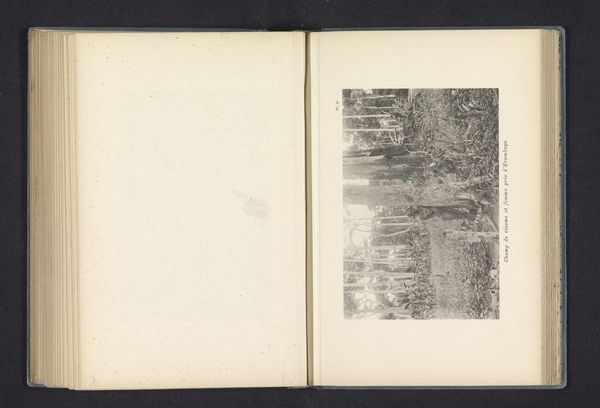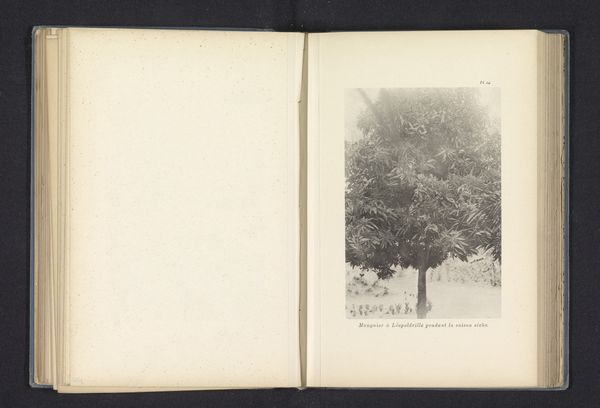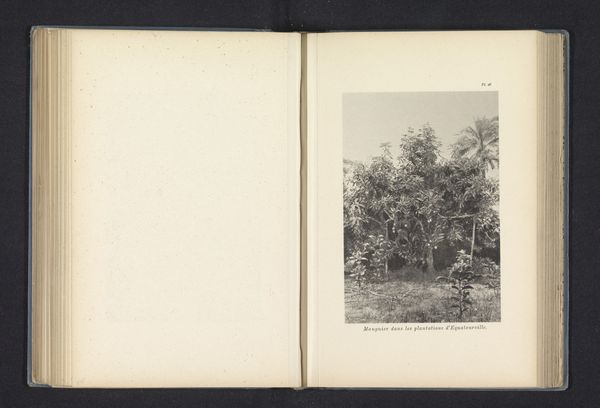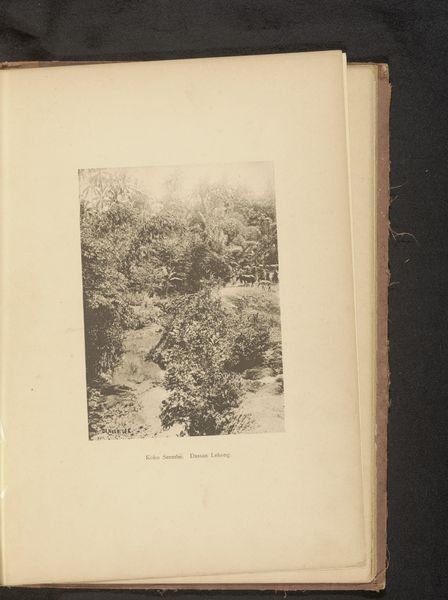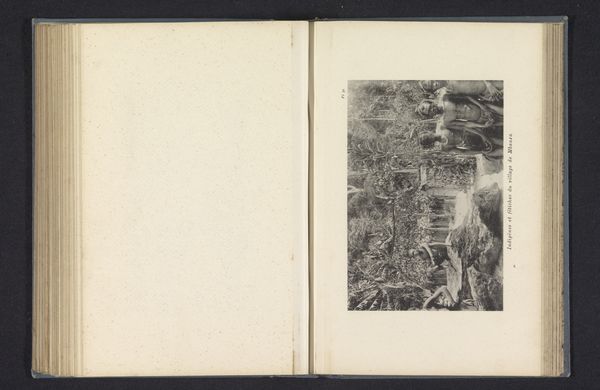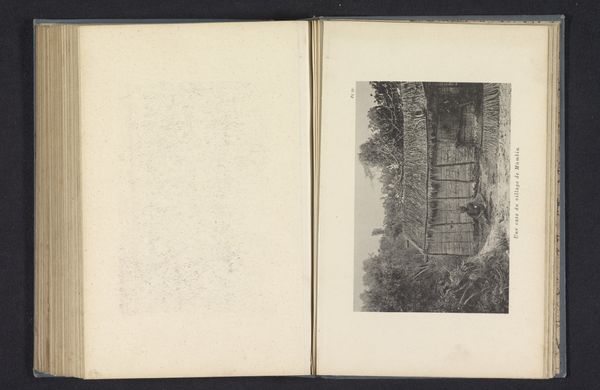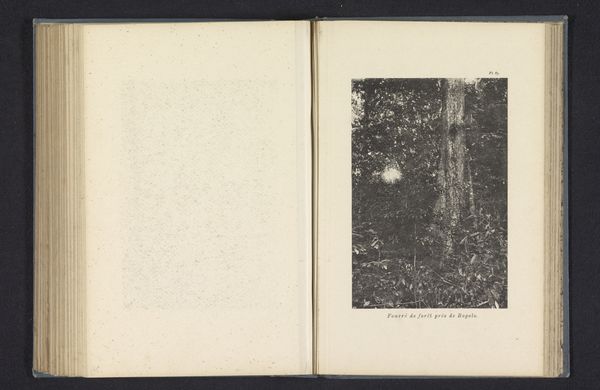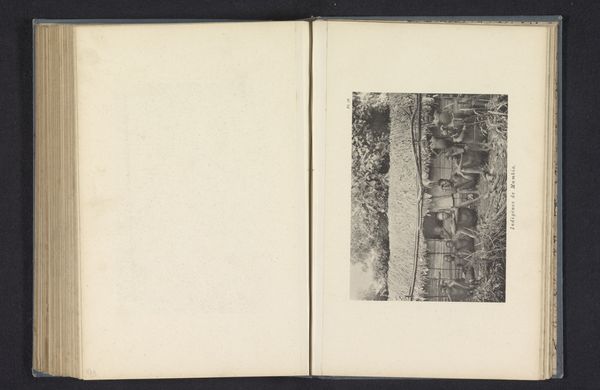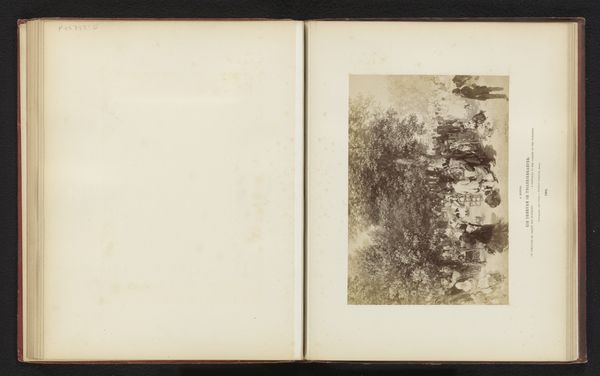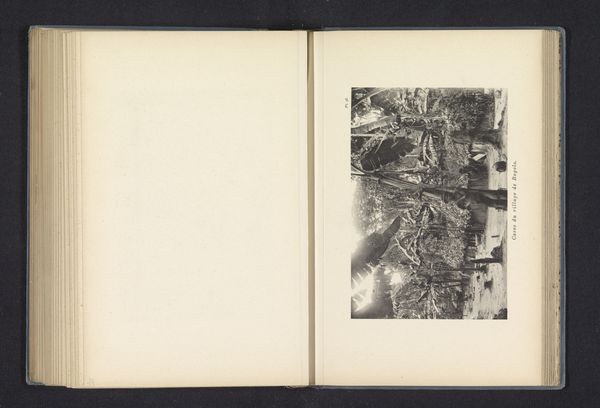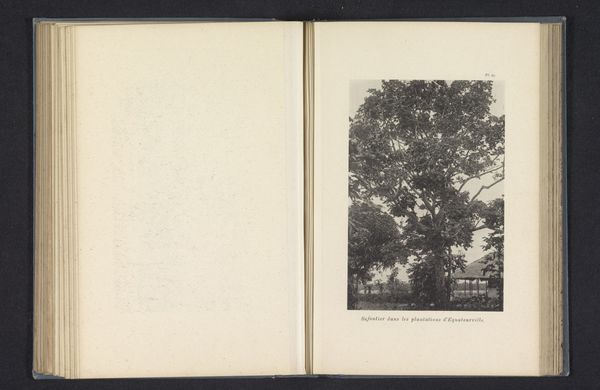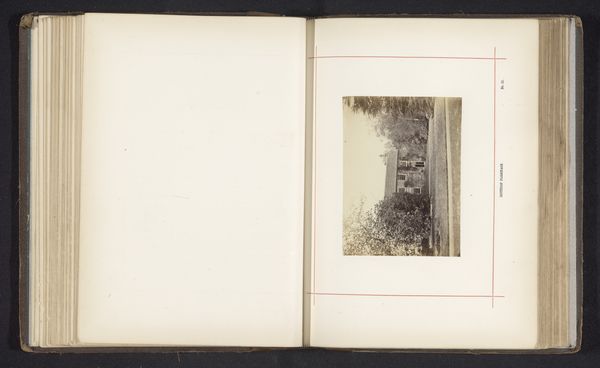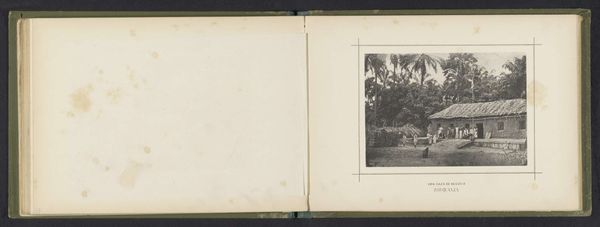
#
aged paper
#
script typography
#
hand drawn type
#
hand-drawn typeface
#
thick font
#
handwritten font
#
delicate typography
#
thin font
#
historical font
#
small font
Dimensions: height 162 mm, width 109 mm
Copyright: Rijks Museum: Open Domain
Curator: We’re looking at a photogravure from 1896 by Franz Thonner entitled, "Bomen in een plantage te Nieuw-Antwerpen," which translates to "Trees in a plantation in New Antwerp." Editor: My immediate sense is of being immersed, almost overwhelmed by the density of the vegetation. The stark blacks and whites heighten the effect. Curator: Exactly, and New Antwerp—now known as Mbandaka—was a significant hub in the Belgian Congo during that period. This image isn’t just about trees; it subtly documents the landscape within the context of colonial exploitation. What do you read from the type elements at the bottom of the plate? Editor: The typeface has a certain historical charm, it appears hand-drawn, a deliberate echo perhaps of the expedition records of the era. The texture reminds me that this is an object that has visibly aged. Curator: These early photogravures served a crucial role—disseminating information about these far-flung locales and essentially shaping European perceptions of Africa. What’s particularly fascinating to me is that this scene can be perceived through two dominant and dueling cultural symbols, on the one hand as the biblical garden and, on the other, a symbol of exploitation. Editor: Absolutely, but in terms of form, observe the composition! Thonner crafts an incredible range of tonal variation, from deep shadows to glimmers of light filtering through the canopy. It’s not merely a documentary record but a careful aesthetic construction. He wants us to *feel* this space, to feel its depth. Curator: Precisely! The visual effect invites a degree of emotional response and perhaps forces an uneasy introspection. The symbol system surrounding trees connects the piece to historical notions of abundance. I read these plants as stand-ins for those native to the region, now subjected to a very different system of value. Editor: Ultimately, Thonner has successfully combined aesthetic formalism with colonial context to offer an interesting lens onto a complicated reality. Curator: Indeed. It prompts us to examine how landscapes are encoded with meaning, carrying heavy implications far beyond their mere appearance.
Comments
No comments
Be the first to comment and join the conversation on the ultimate creative platform.
